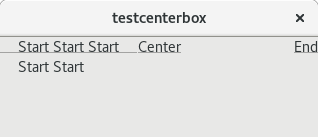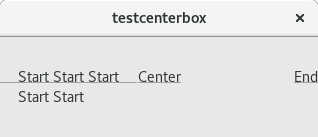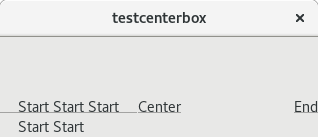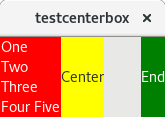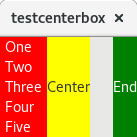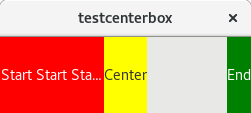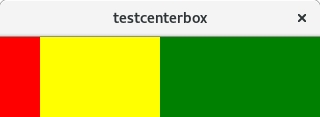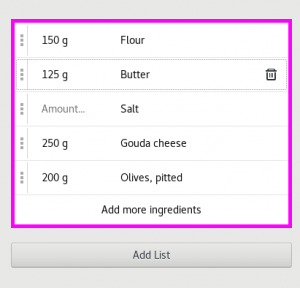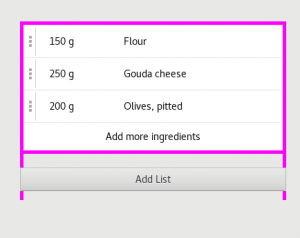Last week at GUADEC in Manchester, the GTK+ maintainers and interested folks met for a working session during the unconference days.
Georges already did a nice job summarizing the results in his blog post, which you should read (if only to see some pictures of the assembled GTK+ folks).
GTK+ 3
We did briefly discuss GTK+ 3. Our impression is that most people are enjoying the stability that came with GTK+ 3.22 and are not in a rush to jump on a new, less stable toolkit version.
The general consensus was that we should maintain a pretty strict stance on API additions in GTK+ 3, but allow new features in when their is a high enough benefit. Examples for this that came up are the client-side versus server-side negotiation protocol support for Wayland, or color emoji support.
GTK+ 4
The bulk of the time was devoted to discussing all the things that we want or need to complete for GTK+ 4. We have a pretty good idea who is going to work on each of these items, but we did not nail down a very detailed timeline for completing them.
At the end, we collected a list of the items that we consider blockers:
- Constraint-based layout
- Support for defining states and transitions in ui files
- Designer support
- Convert keyboard handling to event controllers
- Non-fallback text rendering
- A finished GL renderer
- Clean support for subsurfaces in GDK
- No more root window in GDK
- Event cleanup
Some of these bullet points deserve a more detailed discussion.
Constraint-based layout, states and designer support
Layout with constraints is a flexible system, and it has been successful on other platforms. More importantly, it is much closer to the way most humans thing about laying out things on a screen or piece of paper, and it will hopefully provide a common language that designers and developers of GTK+ applications can communicate in.
The Emeus widget that Emmanuele and others have been working on for a while is using constraints to find positions and sizes for child widgets of an individual container.
The plan for integrating it into GTK+ is a bit more ambitious: We envision a single constraints solver per toplevel that all the containers inside the window add their constraints to. This will require the current containers in GTK+ to express their layout algorithms in terms of constraints, which should not be too hard in most cases, and can be done piecemeal.
States and transitions between them is something that Christian Hergert has prototyped in libdazzle. The idea here is to define not just a complex widget such as a dialog, but also its main states and how transitions between them should work, in a ui file. This will lets us have a UI designer tool that is not just about arranging widgets on a canvas, but goes towards story-boarding and designing transitions. This is of course much easier said than done…
Keyboard handling
Christian took some time to describe the shortcuts engine that he has written for gnome builder, which currently lives in libdazzle. It has some interesting features, like capture-bubble event handling, chording (i.e. multi-key sequences such as Ctrl-C Ctrl-X), tight integration with actions, and the ability to automatically generate help for keyboard shortcuts.
The plan in this area is to take the best features from Christians engine and turn them into one or more GtkEventControllers. Once this work is complete, we will convert all widgets to use event controllers instead of key-press signal handlers.
GtkBindingSet will also be replaced by event controllers.
Text rendering
The Vulkan renderer for GSK is more or less complete. It can render most of what the CSS machinery produces efficiently, using shaders. The big exception is text: what happens for text currently is we render it to a surface using cairo, then upload the surface to a texture, and then use that in render node. For every frame.
What needs to happen here is that we upload the glyphs we need into a larger texture that we keep around as atlas, and then create text render nodes that refer to the atlas.
Since text is a pretty important ingredient in user interfaces, we can’t really claim that we’ve validated the render node approach until we have proper text rendering implemented for Vulkan.
The GL renderer
Benjamin has done most of the work to get the Vulkan renderer to an almost complete state. While he was doing that, the GL renderer has fallen behind – it does not have the shaders that are used in Vulkan.
What needs to happen here is to abstract out the common parts, and backport the rest from Vulkan to its GL equivalent. A not so fun aspect of this is that we may eventually need more than one variant of GL renderer, for legacy GL and GLES platforms. But we can probably get away with just a modern GL renderer, at least initially.
Fonts and Text
A separate session was devoted to new features in our text rendering stack. The features that were the topic here are variable fonts and color emoji. Unfortunately, I missed most of the discussion, but a summary of the outcome is that:
- Behdad has a rough plan for what needs to be done in pango and fontconfig for supporting variable fonts. This involves new syntax in PangoFontDescription for specifying axis values and new API in PangoFontFamily to obtain information about available axes.
- During GUADEC, Behdad merged support for color emoji in cairo, fontconfig and pango and I started to work on some simple emoji input in GTK+. That has landed now too, in both GTK+ 3 and master.
Other
We touched on too many other topics to summarize them all here. One of them was the state of accessibility, but that is a topic for another time.




